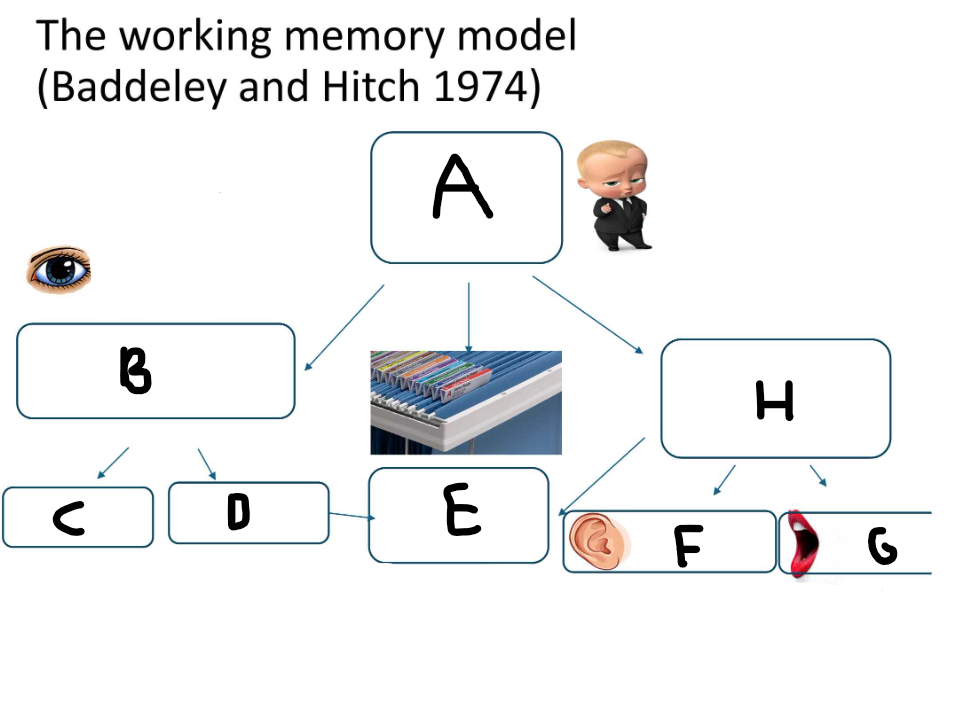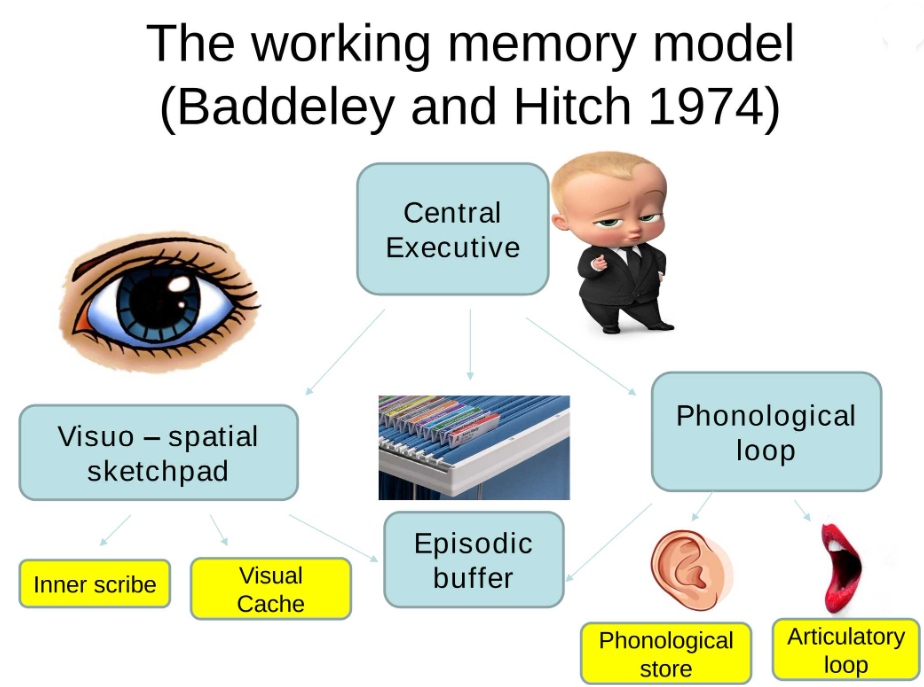Working Memory Model (Booklet 6)
1/12
There's no tags or description
Looks like no tags are added yet.
Name | Mastery | Learn | Test | Matching | Spaced |
|---|
No study sessions yet.
13 Terms
What part of memory does the working memory model (WMM) describe?
Short term memory
Name the 4 stores in the working memory model
Central executive
Phonological loop
Visual spatial sketchpad
Episodic buffer
Describe the function and capacity of the central executive
Co-ordinates the activities of the three subsystems in memory. Has a capacity of 3.
Describe the function of the phonological loop and what it consists of
Deals with auditory information and preserves the order on which information arrives. Consists of:
Phonological store (stores words you hear)
Articulatory process (allows maintenance rehearsal- repeating sounds or words in a loop to keep in working memory)
Describe the function of the visuo-spatial sketchpad (VSS) and what it consists of
The visuo-spatial sketchpad (VSS) stores visual and/or spatial information when required. Consists of:
Visual cache (stores visual data)
Inner scribe (records arrangement of objects in the visual field)
Describe the function of the episodic buffer and when it was added to the model
Integrating and storing information temporarily from the central executive, the phonological loop, the visuo-spatial sketchpad and long term memory. It was added in 2000. (limited capacity of about 4 chunks of information)

Label the diagram
A. Central executive
B. Visuo-spatial sketchpad
C. Inner scribe
D. Visual Cache
E. Episodic buffer
F. Phonological store
G. Articulatory loop
H. Phonological loop

How does the case study of KF support the model?
KF had a motorbike accident and after could recall info from his STM if he read it but not if he heard it
This proves STM is not a single store and it is made up of different stores for verbal and visual information (phonological loop and visuo-spatial sketchpad)
Describe Dual Task Study’s
Participants were asked to carry out 2 tasks at the same time
If both tasks involve one component of the model (for example phonological loop- saying “the” repeatedly and reading) participants find the task difficult
If each task involves a different component (for example imaging a picture (VSS) whilst reading (PL)) this is easier
If both tasks involve the same component this is harder as both tasks use the same slave system which has limited capacity
Supports the WMM as it shows there is a component for visual and auditory information
Give an example of Baddeley’s dual task study
Group 1:
Task 1: Describe the letter “F”
Task 2: Track a beam of light on a screen
Slave systems: Phonological loop, visuo-spatial sketchpad and visuo-spatial sketchpad again.
Group 2:
Task 1: Say the nursery rhyme “twinkle twinkle little star”
Task 2: Track a beam of light on a screen
Slave systems: Phonological loop, visuo-spatial sketchpad.
How does evidence from brain scans support the WMM?
The phonological loop, visuo-spatial sketchpad and central executive must be separate components as they are processed in physically separate parts of the brain.
Why is the role of the central executive unclear?
Case of EVR who had brain surgery to remove a tumour
After surgery EVR could no longer make decisions but his problem solving was unaffected
This suggests the central executive is not a single store but is made up of different stores (brain scan evidence backs this up)
Explain why the model doesn’t account for musical memory
Participants can listen to instrumental music without impairing performance on other acoustic tasks. This suggests musical memory must be separate to the phonological loop.